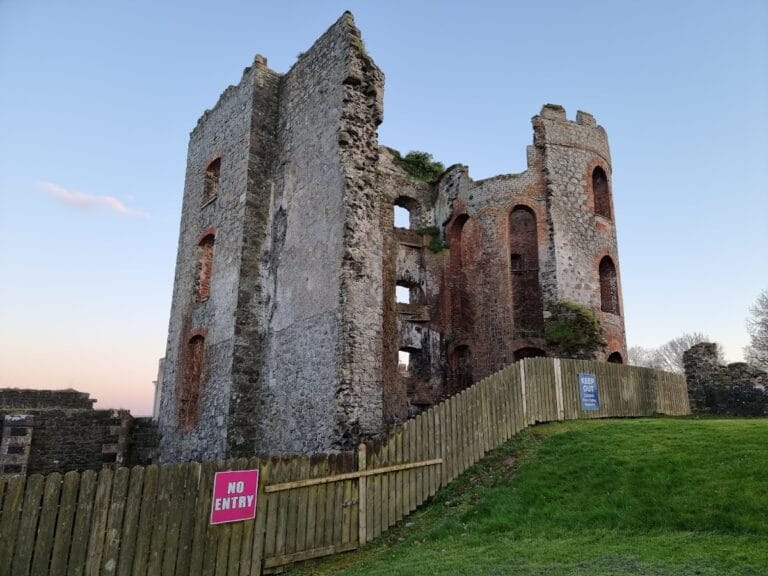Belfast Castle: A Historic Landmark in Northern Ireland
Visitor Information
Google Rating: 4.5
Popularity: Medium
Google Maps: View on Google Maps
Official Website: www.belfastcity.gov.uk
Country: United Kingdom
Civilization: Unclassified
Remains: Military
History
Belfast Castle is located in the city of Belfast, Northern Ireland, United Kingdom, originally established by Norman settlers in the early 13th century. Its initial purpose was to guard a critical river crossing of the River Lagan and to serve as part of the Earldom of Ulster’s defenses.
The earliest castle, constructed by the 1220s, stood near the center of what is now Belfast, close to present-day Donegall Place and Castle Lane. This medieval fortress was rebuilt several times during the 13th to 16th centuries. By the late 14th or early 15th century, control passed to the Gaelic Uí Néill (O’Neill) dynasty of the Cénel nEógain, who converted the site into a towerhouse residence and maintained it as one of their principal strongholds throughout the 15th and 16th centuries.
Throughout this early period, the castle changed hands multiple times in the turbulent struggle for power in Ulster. It was demolished by Henry O’Neill in 1476 and then captured and razed by Red Hugh O’Donnell in 1489. The early 1500s saw occupation by the Geraldine House of Kildare, while English forces briefly held and possibly reconstructed it during mid-16th century military campaigns known as the Enterprise of Ulster. A notorious event occurred in 1574 during the Clandeboye Massacre when soldiers of the 1st Earl of Essex killed much of Sir Brian mac Feidhlimidh Ó Néill’s family during a feast at the castle, after which Essex’s troops took over the stronghold.
By the end of the Nine Years’ War in 1603, the castle lay in ruins. The English Crown granted the site and surrounding lands to Sir Arthur Chichester, who built a new brick castle in the early 1610s on or near the Gaelic towerhouse’s location. This Plantation-era structure burned down in 1708 and was not rebuilt, marking the end of the medieval and early modern castles on this site.
Ownership of the surrounding Belfast estates passed to the Chichester family and later the Donegall family, who managed the land from the 17th century through the mid-19th century. They resided primarily in other residences, such as Donegall House and Ormeau House.
Between 1867 and 1870, the current Belfast Castle was constructed much farther north on the slopes of Cave Hill, overlooking Belfast city and Belfast Lough. Commissioned by the 3rd Marquess of Donegall, this Victorian mansion was designed in the Scots Baronial style by the architectural firm Lanyon, Lynn and Lanyon. Through marriage, ownership passed to the Shaftesbury family in 1883, with the 9th Earl of Shaftesbury holding it until its transfer to the City of Belfast in 1934.
Since becoming public property, the castle has served various community functions and underwent extensive restoration between 1978 and 1988, with additional refurbishment completed in 2003.
Remains
The original medieval and Plantation-era castles were located in central Belfast near the confluence of the River Farset and the River Owenvara, historically known as the Blackstaff River. The early fortifications were rebuilt multiple times using stone and, in the Plantation period, primarily brick construction. Archaeological records indicate that the 17th-century brick castle, built by Sir Arthur Chichester, stood on or close to the site of the former Gaelic towerhouse. This brick structure was destroyed by fire in 1708 and has not been reconstructed since. No visible remains of this castle survive today.
The current Belfast Castle, constructed in the late 19th century, sits roughly 400 feet (120 meters) above sea level on the slopes of Cave Hill, a significant natural landmark north of the city center. Built mainly between 1867 and 1870, the mansion is fashioned from a distinctive pink sandstone quarried near Newtownards in County Down, combined with sandstone dressings from Giffnock, Renfrewshire. These materials rest on a robust plinth of roughly cut basalt rock. This new site and structure are separate and distant from the medieval castles that once stood by the rivers.
A prominent feature of the Victorian castle is its serpentine stone staircase on the garden-facing façade, added in 1894 for the 9th Earl of Shaftesbury. Made of greyish-brown stone, this curving outdoor stairway provides a striking contrast to the main building’s warm reddish sandstone and brick hues. The castle’s towers and walls have been restored over time, and many interior rooms have been adapted for community uses such as tea rooms and event spaces.
Within the former demesne grounds lies the Chapel of the Resurrection, a funerary chapel for the Donegall family constructed in the late 1860s in the Decorated Gothic Revival style. Originally built as a mortuary chapel and mausoleum, it was later closed and suffered vandalism before being converted into luxury apartments.
The Main Gate Lodge, designed by architect John Lanyon during the same period as the castle, remains standing near the former estate entrance on Antrim Road. This lodge, executed in the Scots Baronial style, is built of roughly squared sandstone blocks with pink stone accents. It has outlasted much of the original demesne’s boundary walls, which were mostly removed during mid-20th-century housing developments. Today, the lodge exists amid modern housing and functions as a commercial property.
While the original medieval and Plantation castles near the rivers are no longer extant, the Victorian Belfast Castle and several associated 19th-century estate buildings offer tangible links to the city’s layered history of settlement, conflict, and architectural evolution.










